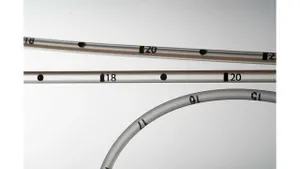Venture Plastics deploys decoupled molding with immediate results
Venture Plastics Inc. (Newton Falls, OH) says its implementation of decoupled molding has netted a "dramatic" payoff and that it can now provide customers "unsurpassed process repeatability." The customer injection molder implemented RJG Inc.'s Decoupled III Process, which seeks to optimize the injection molding process by using process data like temperature, flow rate, pressure, cooling rate, and time to identify and correct viscosity variations, which are inherent in polymers and act as the r
July 6, 2011
Venture Plastics Inc. (Newton Falls, OH) says its implementation of decoupled molding has netted a "dramatic" payoff and that it can now provide customers "unsurpassed process repeatability." The customer injection molder implemented RJG Inc.'s Decoupled III Process, which seeks to optimize the injection molding process by using process data like temperature, flow rate, pressure, cooling rate, and time to identify and correct viscosity variations, which are inherent in polymers and act as the root-cause of product defects.
Venture Plastics' RJG system. |
RJG's process monitoring technology press-side on one of Venture's IMs. |
Jim Smith, Venture's VP operations, said program implementation represents a "significant financial investment, requires extensive training for the staff, and demands consistent effort by the engineering department to fine tune all of the essential components," admitting that the overall process represented "challenging undertaking."
Now that the program is in place, however, Venture says it has enabled it to maintain consistency in the three stages of molding: fill, pack, and hold. To help showcase the results, Venture highlights an automotive instrument bracket where the company was able to reduce cycle time by 2%, scrap by 1.5%, and part weight by 4%. On top of that, it has achieved a total part cost saving of 12.5%. "We are pleased and our customer certainly is too!" said James Monroe, Venture's manufacturing engineer.
In practice, decoupled molding focuses on the behavior of the material, not process set points. It utilizes sensors strategically located inside the mold to control cavity pressure, viscosity, and melt temperature, which helps control dimensions and limit variations in the part being molded.
About the Author(s)
You May Also Like



